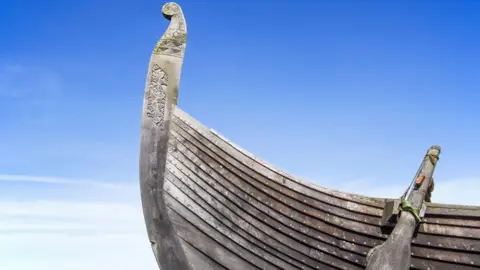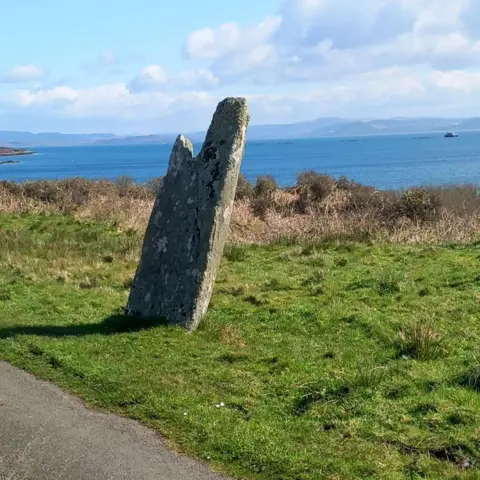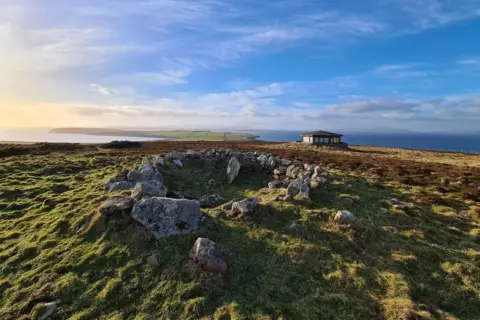Did Vikings drag ships across land to avoid dangerous Scottish seas?
 Getty Images
Getty ImagesArchaeologists are investigating the possibility Vikings used shortcuts over land to help them move warships and smaller boats around Scotland's west coast.
Tarbert in Kintyre is among potential locations where boats were dragged over low-lying land to reach different areas of sea and destinations beyond.
The practice, called portage, would have saved crews dangerous journeys by sea around the 40-mile (64km) long Kintyre peninsula.
Archaeologists said it was possible boats were hauled over split wood covered in slippery seaweed to make land crossings easier.
 Shane McLeod
Shane McLeodThe research forms part of The Norse and the Sea project led by the University of the Highlands and Islands' Institute for Northern Studies.
The three-year project is in its final year and involves researchers from Germany.
It has been gathering evidence of Viking age communications and other activity that occurred 800 to 1,200 years ago, particularly in and around the Inner Hebrides.
Evidence of portages survive in Old Norse place names both in the Northern Isles and Hebrides, and the project team said there were several clues to Tarbert being used as a shortcut between the Firth of Clyde and the Inner Hebrides.
The group of islands include Islay, Gigha and Iona, where monasteries were attacked by Vikings.
The archaeologists said Tarbert's Gaelic name means "over bringing" suggesting the carrying of boats.
There is also a Tarbert on Gigha with a standing stone visible from the sea and believed to have been used as a navigational aid.
A story called a saga written in the 13th Century tells of a king of Norway, Magnus Barelegs, staking a claim to Kintyre by sitting in the back of a boat and being dragged across the land.
Dr Shane McLeod, of the Institute for Northern Studies, said: "This saga was written over 100 years after that so we cannot be certain it happened.
"But it is the kind of colourful story you would have thought would have been passed down if it had happened."
The saga also mentions warships often being hauled over land at Tarbert.
Dr McLeod said: "So even if Magnus wasn't dragged across it seems other people had been."
 Shane McLeod
Shane McLeod Alex Sanmark
Alex SanmarkTantalisingly, wood was ploughed up at West Tarbert by a farmer in the 1990s. The longest piece is almost 5m (16ft) long.
Archaeologists hope new technology will determine whether it dates to the Viking age, and potentially formed part of a portage system for moving boats.
The wood is being analysed by specialist Dr Anne Crone and Prof Derek Hamilton at Glasgow's Scottish Universities Environmental Research Centre.
The institute's Prof Alex Sanmark said hauling boats over land on Scotland's west coast would have made sense.
She said: "The seas can be wild and the boats were rowed or sailed, and in Scotland the tides are very strong.
"Even though a portage may have taken a few hours to do and at great effort - you had to get everything out of the boat and then put it back in - in terms of safety and time saving that seemed to have been worth it."
The project has also investigated Viking use of inland waterways and where they set up beacons and observation posts along the west coast.
The team is to publish its research next year.
